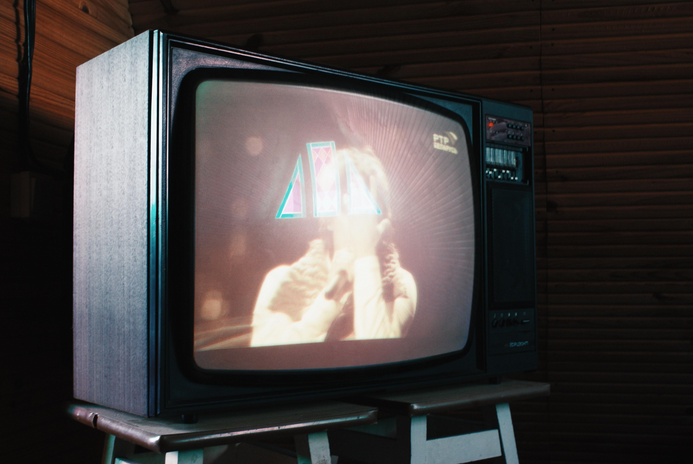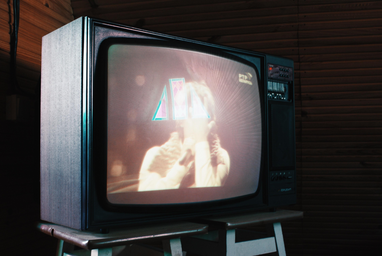Edited by: Pallavi NB
Content Warning: mentions of non-consensual touching, some to the extent of triggering panic attacks
Disclaimer: This article refers only to heterosexual love since it reflects Indian media and social media. Moreover, in this article, there is a distinction between the same words Love and love to denote romantic affection — Love — from the entire vastness of affection, be it platonic, familial, or more — love. Romantic affection is the capitalized Love to connote the importance given to romance by popular media.
There’s Love, and then there’s love. While the grandeurs of romance have been highlighted time and again by visual media such as movies and shows, the contours of non-romantic love have been cast aside. The phrase ‘love story’, specifically in Bollywood movies, refers to only romantic love, especially a heterosexual relationship that would most definitely end in marriage. Why marriage? Well, because ‘sanskaar’. Unlike the movies, love with a capital L doesn’t really frequent our daily lives, nearly as much as the smaller platonic love does. Yet, with the eyes set on the horizon of Bollywood, small acts and bonds of affection are, more often than not, completely overlooked.
The idea that one can only be loved, if the love is romantic, has become so deep-seated that it is never questioned. We’ve grown to internalize this toxic ‘90s wala Bollywood romance. The constant glorification of romance itself has left imprints upon us that have stained our ideas of love. This is precisely the danger of collapsing the breadth of love into the smaller canvas of romance; family and friendships fall out of the picture.
Realising your internalisation can come off as a shock — you begin to suddenly see the difference between what you preach and what you propagate from within. You might talk about consent while your ideas and desires are still rooted in the ‘90s wala romance’. So, where else to begin than the roots of Bollywood romance itself — the ‘90s.
A Trip Down Bollywood’s Pipeline: Fishing for ‘classic romance’
Dilwale Dulhania Le Jayenge (or DDLJ, 1995), Kabhi Khushi Kabhi Gham (or K3G, 2001) and Dil Se (1998) are the godfathers of today’s Love. The movies have, for a long time, been hailed to depict true, poignant, and honest love in general. Fun fact: DDLJ still runs in theatres in Mumbai – such archaic ideas of love are still being watched and enjoyed. K3G claims itself to be the ‘best’ family drama, only to realise that Rahul and Anjali desert all known families 20 minutes into the movie. Dil Se is the Indian version of Romeo and Juliet — love so pure they’d rather die together, featuring some groping in the name of love (referring to multiple scenes in the film where Amarkant ‘embraces’ Meghna without consent leading to her violent and physical panic attacks). While these movies have highlighted romance and the “bliss” it brings, we have failed to notice that once the storyline of love picks up, family, friends, and pets fade away, and their storylines are often left incomplete. But what is non-romantic love? A different Bollywood movie, surprisingly, has answers. Dear Zindagi (2016) takes into consideration the ideas of consent, space, and respect, and approaches the notions of love from the self. We see the lead actor go through self-realization that enables her to become a better counterpart in a relationship, be it romantic or not.
Do We Have To Hear This From The Therapist?
Dear Zindagi is a coming-of-age movie starring a woman who starts going to a therapist to help her deal with feeling unloved. In attempts to solve it herself, she kept hopping from one romantic relationship to another, only to realise that she needed professional help. The movie’s central focus is on how non-romantic relationships are important. What I call the ‘Dear Zindagi Theory of Love’ is the therapist’s explanation that collapsing the expectations of multiple relationships into one romantic relationship is unfair to oneself and their partner.
When they say life is a small circle, Bollywood is even smaller. Shah Rukh Khan, who plays the toxic love interest in DDLJ, K3G, and Dil Se ironically plays the well-aware and understanding therapist here. He says that there will always be certain things a romantic partner cannot fulfill — you might need a set of friends to catch a movie, a different set of friends for coffee, and a totally different set of friends to rant with. How, then, can romance ever fill in the shoes of other relationships, namely friendships and families? While the woman understands this and patches things up with her family, we will be borrowing this theory to see if these ‘classic romantic’ movies have, if any, non-romantic relationships.
It is You and I Against the World : What About Friends and Family?
One of the most important non-romantic bonds are those of friends and family. Something to note, relationships in general are in abundance; hence, there is no scenario which dictates that we can only have romantic love at the ruin of familial and friendship bonds. Simran and Raj’s story in DDLJ begins with the joys of a long trip with friends, but since the screen now only does close-ups of those in Love, we never discover the names of their friends nor see them. Simran’s mother, who broke all the Bollywood rules of strict mothering by indulging in her daughter’s wishes for true love, is never brought up again. Raj’s dad, who broke the conventions of academics and celebrated his son’s failing, was also lost amidst the narrative of Love.
Rahul, adopted son of the Raichands, and Anjali (characters from the movie K3G), the daughter of a strong single mother, abandon their family for Love. Dil Se is more towards the extreme — dying together if they cannot live together. The romance that we’ve internalized is not only all-consuming, but also very toxic. Stalking and non-consensual touching occur in all these movies; Raj stalks Simran into submission, Rahul uproots Anjali from the only home she ever knew without consent, and Meghna from Dil Se gets several panic attacks every time Amarkant touches her non-consensually. In all, not only have these movies allowed Love to erase the identities of the main leads, but also encouraged — and continue to encourage — toxic practices for this so-called ‘true love’.
love beyond Love: Packed Tiffin By Grandma
While we look into the toxic love trend Bollywood had and still has, Bollywood has come a long way and we need to give credits. Nevertheless, it is important to become aware of this internalisation to battle it.
If this is the kind of romance that we’ve internalised, it is essential to unearth, unlearn, and change it. How do we do that? While watching movies from now on, let’s appreciate the mother’s efforts of making one’s favorite food, the father’s efforts of trying to help, and the friendships that have shaped the characters into who they are. A large part of this unlearning can come by being conscious of the fictional element that drives most visual media, thereby taking the first step to battle this internalisation. Love languages are silently everywhere, it is up to us to notice the extra handful of food your grandmother stuffs in your mouth and the equal packets of snacks your sibling never forgets to buy. And maybe someday, hopefully, Bollywood will also learn to extend its definition of love to accommodate all these other forms of warmth in human relationships.


